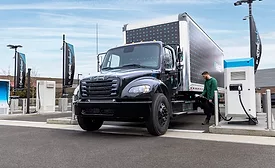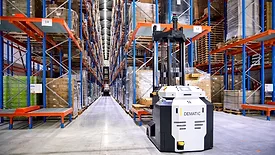Home » Keywords: » transportation
Items Tagged with 'transportation'
ARTICLES
Delivery truck OEMs offer a little something for everyone with new models
Read More
New York’s congestion pricing loom over delivery fleets
What impact could first US congestion pricing have on delivery market?
January 3, 2025
2025 Trucks Report: New releases accelerate toward efficiency
Annual Truck Report looks at what’s in store from top distribution vehicle manufacturers
November 27, 2024
2024 Trucks Report: Delivery fleet manufacturers continue to put more of their eggs into the electric basket
Trucks manufacturers equip vehicles with latest software, improved ergonomics
December 1, 2023
Distribution
Delivery fleet vehicle leasing companies are getting electrified
Truck manufacturers unveil leasing options for electric vehicles
July 11, 2023
2023 Trucks Report: Electric vehicles continue to make most of the news in the fleet equipment space
Trucks manufacturers equip vehicles with latest software, improved ergonomics
December 5, 2022
Warehouse
Automated guided vehicles help warehouses address labor shortage
AGVs support safety efforts within distribution centers
July 21, 2022
Distribution
How to make sure your route optimization system lives up to its purpose
3 questions fleet managers can ask will help guide system analysis
May 6, 2022
Distribution
The latest engines take incremental steps toward greener future
Manufacturers announce new releases, partnerships
March 30, 2022
Elevate your expertise in the beverage marketplace with unparalleled insights and connections.
Join thousands of beverage professionals today. Shouldn’t you know what they know?
JOIN NOW!Copyright ©2025. All Rights Reserved BNP Media.
Design, CMS, Hosting & Web Development :: ePublishing








